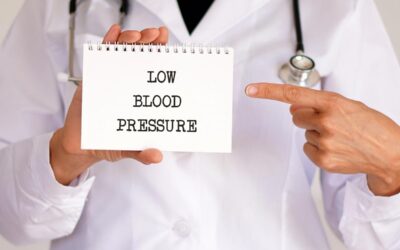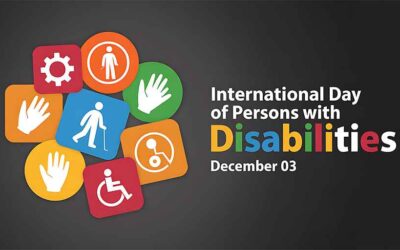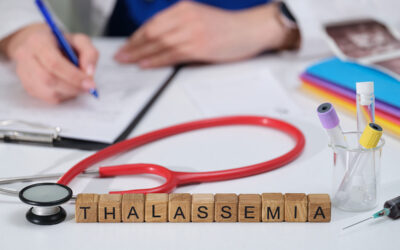World Thalassemia Day 2025: A Closer Look at the Condition and Its Management

Thalassemia is a group of inherited blood disorders that affect how the body produces haemoglobin, leading to a range of symptoms. The severity of the condition may vary; while some people may experience only mild fatigue, others might face serious complications such as delayed growth, frequent infections, or an enlarged spleen. World Thalassemia Day, observed on the 8th of May every year, brings attention to the challenges faced by those living with this condition and encourages greater awareness, screening, and care. In this blog, we’ll start by looking at why this day matters and then explore the basics of thalassemia.
Table of Contents
ToggleThe Importance of World Thalassemia Day
World Thalassemia Day, observed annually on May 8, was established in 1994 by Panos Englezos, the founder and president of the Thalassaemia International Federation (TIF). He initiated this day in memory of his son, George, who succumbed to thalassemia. The day serves to honor all individuals who have lost their lives to this condition and to promote awareness, prevention, and management strategies for thalassemia .
This day plays a pivotal role in:
- Raising Awareness: Educating the public about thalassemia, its symptoms, and the challenges faced by patients.
- Advocacy: Encouraging governments and healthcare organizations to invest in research and provide accessible treatment options.
- Support and Solidarity: Uniting patients, families, healthcare professionals, and communities to support those affected by thalassemia.
- Promoting Research: Highlighting the need for continued research into improved treatments and potential cures.
Theme for 2025
The theme for World Thalassemia Day 2025 is “Together for Thalassaemia: Uniting Communities, Prioritising Patients.” This theme emphasizes the importance of a patient-centered approach, advocating for holistic care that addresses not only the medical but also the emotional and social needs of individuals living with thalassemia. It calls for global unity in ensuring that patients are at the forefront of healthcare policies and practices.
What is Thalassemia?
Thalassemia is a genetic blood disorder that affects the body’s ability to produce haemoglobin, the protein in red blood cells that carries oxygen. When haemoglobin production is faulty, red blood cells don’t function properly and break down faster, leading to anaemia. The severity of thalassemia depends on the number and type of gene mutations inherited.
Types of Thalassemia
- Alpha Thalassemia: This type occurs when one or more of the four alpha-globin genes are missing or altered. The severity depends on how many genes are affected. People with one or two gene deletions may have no symptoms or only mild anaemia, while those with three deletions may develop moderate to severe symptoms, such as fatigue or an enlarged spleen. When all four genes are affected, the condition becomes life-threatening and usually results in stillbirth or serious complications unless treated early.
- Beta Thalassemia: This form results from mutations in the beta-globin genes. Individuals with a single faulty gene may not have symptoms or may experience mild anaemia, which often goes unnoticed. More severe cases, where both beta genes are affected, can lead to significant anaemia that appears in early childhood and requires regular blood transfusions. The severity can vary depending on how much functional beta-globin is produced.
What are the Symptoms of Thalassemia?
Thalassemia symptoms can vary depending on the type and severity. People with mild forms may have few or no noticeable signs, while those with moderate or severe forms often show symptoms early in life. Common symptoms include:
- Fatigue and weakness: Due to reduced oxygen-carrying capacity of the blood, individuals often feel tired or low on energy, even with enough rest.
- Pale or yellowish skin (jaundice): A common sign of anaemia and increased breakdown of red blood cells.
- Irritability: Often seen in children, caused by discomfort or fatigue from low haemoglobin levels.
- Poor appetite: Children with thalassemia may eat less, especially during periods of illness or fatigue.
- Delayed growth and development: Chronic anaemia can slow down physical growth and delay puberty in children and teenagers.
- Enlarged spleen (splenomegaly): The spleen works harder to remove damaged red blood cells, which can lead to swelling and discomfort in the upper left side of the abdomen.
- Dark-coloured urine: Caused by the breakdown of red blood cells releasing excess bilirubin.
- Facial bone changes: In severe cases, the body tries to produce more red blood cells by expanding the bone marrow, which can cause the bones of the face and skull to change shape.
- Frequent infections: An overactive spleen or repeated transfusions can weaken the immune system, making the person more prone to infections.
- Shortness of breath: Especially noticeable during physical activity, due to reduced oxygen in the blood.
Early detection of these signs can help in diagnosing the condition and beginning appropriate treatment to avoid complications.
Read more-World Hand Hygiene Day 2025: Spreading Awareness for a Healthier Future
How is Thalassemia Diagnosed?
Diagnosing thalassemia involves a series of blood tests, family history review, and sometimes genetic analysis. These help determine not just the presence of thalassemia but also its type and severity:
- Complete Blood Count (CBC): This is usually the first test done. It measures various components of blood. In thalassemia, haemoglobin levels are often low, and red blood cells tend to be smaller than normal (microcytic) and fewer in number.
- Peripheral Blood Smear: A blood sample is viewed under a microscope to assess the shape, size, and appearance of red blood cells. In thalassemia, these cells may look pale (hypochromic), oddly shaped, and show uneven distribution, which can hint at the diagnosis.
- Haemoglobin Electrophoresis: This test separates the different types of haemoglobin in the blood. It helps detect abnormal forms or imbalances in haemoglobin levels, such as increased levels of HbA2 or HbF, which are commonly seen in beta thalassemia.
- Iron Studies: These are done to check iron levels in the blood and differentiate thalassemia from iron-deficiency anaemia. Both conditions can cause similar red cell changes, but iron supplementation is not appropriate for thalassemia unless there’s also iron deficiency.
- Genetic Testing: If the above tests suggest thalassemia, DNA analysis may be performed to confirm mutations in the alpha or beta globin genes. This test is particularly useful for identifying silent carriers and is often used in prenatal or family screening.
- Family History Evaluation: Since thalassemia is inherited, a doctor may ask about any known cases of anaemia, frequent blood transfusions, or diagnosed blood disorders in close relatives.
In some people, especially those with milder forms of the condition, thalassemia may be detected incidentally during routine blood work.
What are the Treatment Options for Thalassemia?
Treatment for thalassemia depends on the type—alpha or beta—and the severity, which can range from mild (thalassemia trait) to severe (thalassemia major). The main goals of treatment are to maintain adequate haemoglobin levels, manage symptoms, prevent complications, and improve quality of life.
Blood Transfusions
For individuals with moderate or severe thalassemia, especially beta thalassemia major, regular blood transfusions are a key part of treatment. These transfusions help maintain adequate haemoglobin levels, reduce symptoms like fatigue and breathlessness, and support overall growth and energy levels. The frequency of transfusions varies based on individual need but is usually every few weeks.
Iron Chelation Therapy
Frequent transfusions can cause excess iron to build up in the body, which may damage the heart, liver, and other organs. Iron chelation therapy helps remove this excess iron. It is usually given through oral medications or sometimes as injections, depending on the severity of iron overload and the patient’s response to treatment. Regular monitoring of iron levels is necessary during this therapy.
Folic Acid Supplements
Doctors often recommend folic acid supplements for people with thalassemia to help with red blood cell production. This is particularly helpful for those who are not on regular transfusions but still have mild anaemia or fatigue. It supports the bone marrow in producing healthy cells and is generally safe for long-term use.
Bone Marrow or Stem Cell Transplant
A bone marrow or stem cell transplant is currently the only curative treatment for thalassemia. It involves replacing the patient’s defective stem cells with healthy ones from a compatible donor, usually a sibling. This treatment is most effective in younger patients and when performed early in the course of the disease. However, due to its complexity and associated risks, it is not an option for everyone.
How is Thalassemia Managed?
Managing thalassemia involves more than just treating symptoms—it requires long-term monitoring, supportive care, and efforts to prevent complications. The approach depends on how severe the condition is and the patient’s age, general health, and response to treatment. Key aspects of management include:
- Regular medical follow-ups: Frequent check-ups help track haemoglobin levels, organ function, iron overload, and growth. This ensures that the treatment plan stays effective and up to date.
- Monitoring for Iron overload: Repeated transfusions can lead to excess iron in the body. Doctors monitor iron levels through blood tests or MRI scans and adjust iron chelation therapy accordingly to protect organs like the heart and liver.
- Growth and hormone monitoring: Children with thalassemia are monitored for delayed growth, delayed puberty, and bone health issues. Some may need hormone therapy or nutritional support to stay on track developmentally.
- Infection prevention: Safe transfusion practices, vaccinations, and—when necessary—preventive antibiotics help reduce the risk of infection, especially in those receiving frequent transfusions.
- Emotional and psychological support: Living with a chronic condition can be mentally exhausting. Counselling, support groups, and school or workplace accommodations can help patients cope better.
- Diet and lifestyle support: A nutritious, well-balanced diet—especially one rich in calcium and vitamin D—helps support energy levels and bone health. Patients are usually advised to avoid unnecessary iron supplements unless prescribed.
- Education and genetic counselling: Understanding the condition and how it’s inherited is important for both patients and families. Genetic counselling helps couples assess the risk of passing thalassemia to their children and make informed reproductive choices.
Spreading Awareness This World Thalassemia Day
World Thalassemia Day is a chance to talk more openly about genetic testing, blood donation, and the support families need to manage thalassemia well. If you or a family member has symptoms or a known history of thalassemia, it’s important to consult a doctor early on. At Graphic Era Hospital, our team offers reliable diagnostic services, management and counselling support for individuals with thalassemia. This World Thalassemia Day, take a step towards better health—book a consultation and get the clarity you need.
By Specialities
- Bariatric Surgery
- Cancer Care
- Cardiology
- Dental
- Dermatology
- Diabetes & Endocrinology
- Endocrinology and Diabetes
- ENT (Ear Nose Throat)
- Eye Care
- Gastroenterology
- Haematology
- Health Care
- Health Tips
- Hematology
- Hepatology
- Internal Medicine
- Mental Health and Behavioural Sciences
- Metabolic
- Neonatology
- Nephrology
- Neurology
- Nutrition & Dietetics
- Obstetrics & Gynaecology
- Oncology
- Ophthalmology
- Orthopaedics
- Paediatric
- Physiotherapy & Rehabilitation
- Plastic and Reconstructive Surgery
- Psychology
- Pulmonology
- Rheumatology
- Spine
- Urology
Recent Posts
- What Causes a Sudden Drop in Blood Pressure? Know the Symptoms Before It’s Too Late
- Burning Sensation While Urinating: Common Causes and When to See a Urologist
- Strep Throat (Bacterial Infection): Symptoms, Diagnosis, and Effective Care
- International Day of Persons with Disabilities 2025: Breaking Barriers, Building a More Inclusive Future
- World AIDS Day 2025: Transforming HIV Care Through Awareness and Action
Need expert medical advice?
Share your details and our healthcare specialists will reach out to assist you.
By proceeding, you acknowledge and agree to our Privacy Policy, Terms of Use, and Disclaimer.



















